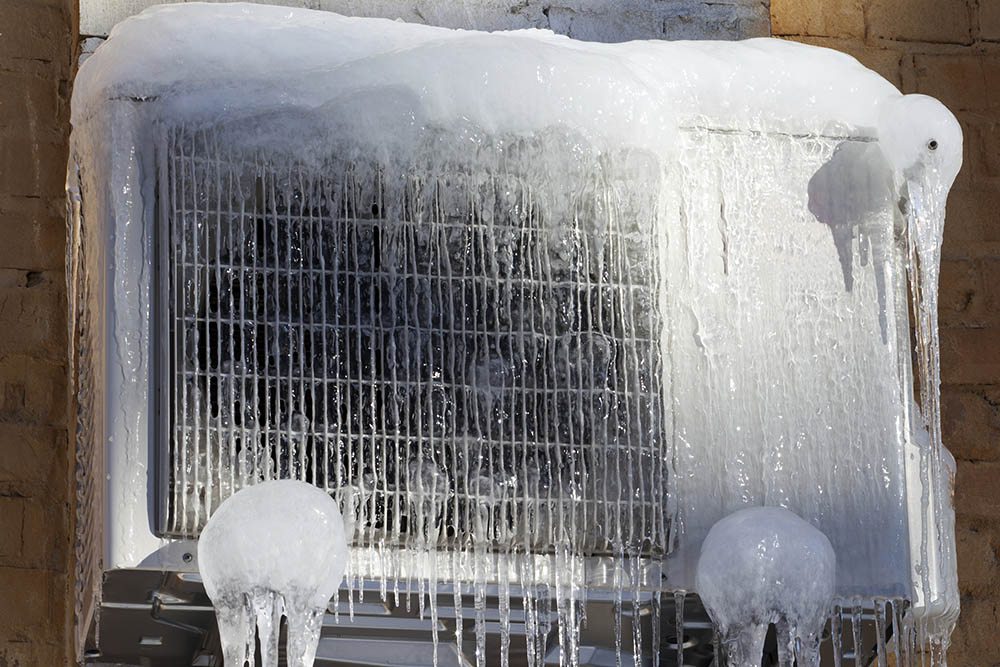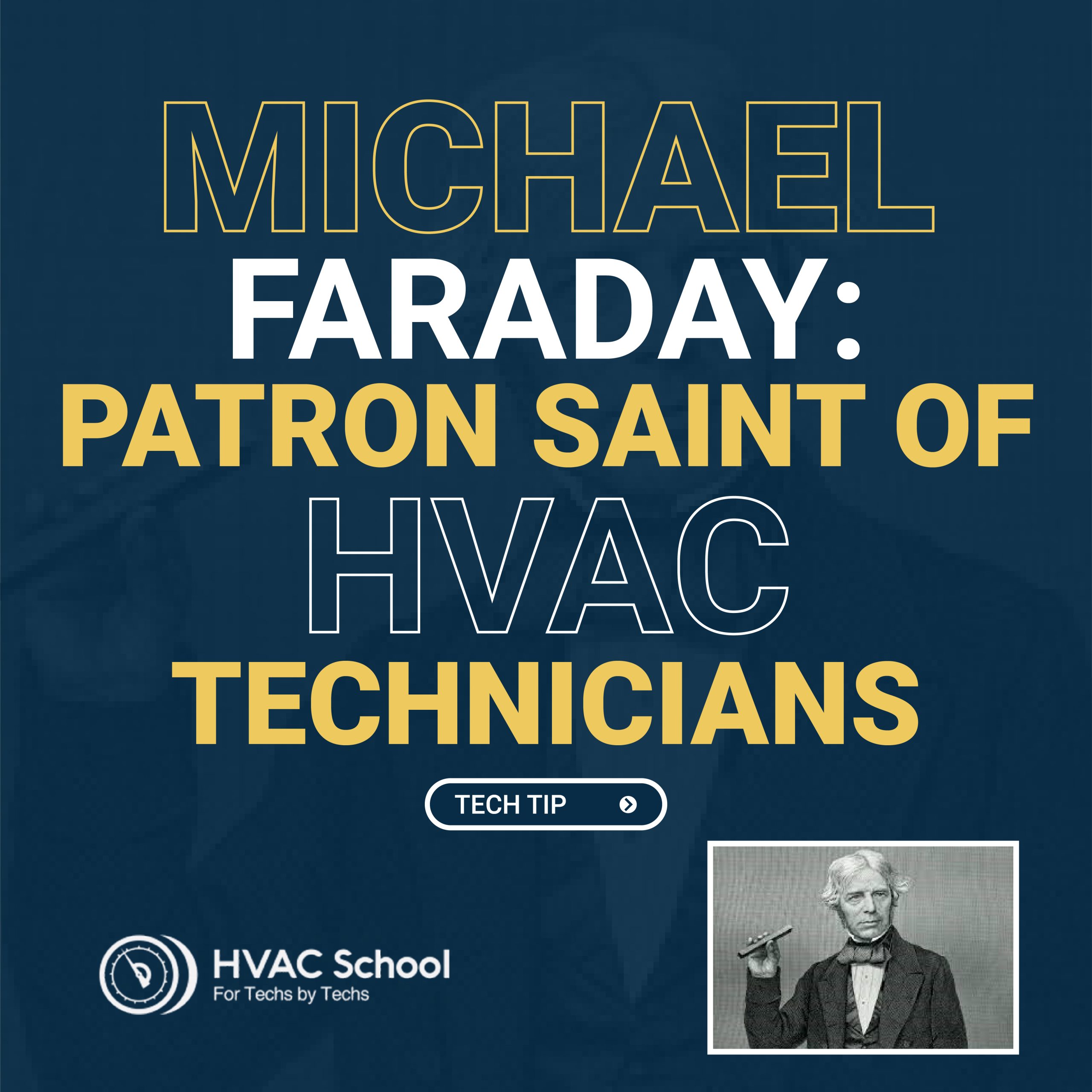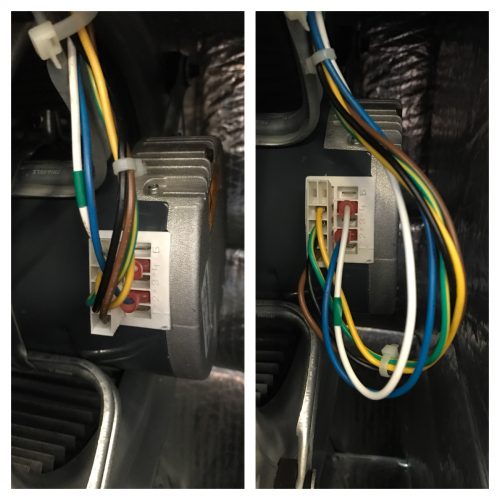Get Tech Tips
Subscribe to free tech tips.
Refrigeration Gas Defrost

Let's take a deeper dive into the magic that is gas defrost.
Most techs who are familiar with heat pumps understand the basics of a gas defrost. When we apply this strategy to a larger system where we're only reversing a small part of the system, we need to add some controls and valves to get the job done optimally.
Since we're already familiar with the basics of defrost systems and controls, I'm not going to dwell on things like frequency or duration of defrost. (If you're not familiar with those, you can read about Defrost Time and Temperature and Defrost Termination Fail-Safe to get up to speed.) We will get into some unique termination methods and defrost efficacy testing that only work with reverse cycle defrosts.
There are two basic types of gas defrosts. Hot gas defrost is where superheated discharge gas is directed into the evaporator, and “Kool gas” is a trademarked name for a defrost that directs saturated vapor from the top of the receiver unto the evaporator. Each has advantages and disadvantages, but both work essentially the same way.
So, defrost starts, and a whole lot starts happening at once. Three electrically actuated valves all have to work together to make this happen.
First, we need to create a pressure differential between the gas we’re sending into the evaporator and the liquid line. That is to allow that gas to flow through the evaporator and back into the liquid line. Many different valves are applied to do this, and an in-depth treatment of each valve isn't really possible here, so we'll just look at the two most common places they're applied.
Discharge line
This is more common on hot gas defrost systems as opposed to Kool gas systems. A valve is installed in the discharge line, and it creates a pressure differential when activated.

Liquid line
The same thing applies to the liquid line, really. This valve will work for either but is really necessary for a Kool gas system. A discharge differential won't work for Kool gas.

Regardless of the location in the system, the valve is typically adjusted for an 18-20 PSI (1.24 bar-1.47 bar) differential setting. If your equipment is significantly higher than your evaporator, this may need to be set even higher. We'll get into a method to test this and ensure that the defrost is working properly towards the end of the article.
With the differential created, we now need to direct defrost gas to the evaporator. To do this, we have two valves: one that stops flow from the suction line into the compressors and one that directs the gas into the suction line and back towards the evaporator. The differential valve activates at the same time; both of these valves activate and start the defrost process.

The gray-bodied valve installed in the vertical line stops refrigerant flow to the compressors. The brass valve installed on the horizontal line opens to admit hot gas to the evaporator.
Out in the evaporator, we've got a check valve piped to bypass the TEV.

The actual check valve is not visible in this photo. The line leaving the distributor allows condensed liquid to leave the coil, bypass the metering device, and re-enter the liquid line through a check valve.
The last thing is that, with all this heat being forced into the evaporator, we normally want to turn the evaporator fans off and sometimes turn on small heaters to prevent water running off the coil from freezing on a cold drain pan.
Let's “follow the gas” and try to visualize what's happening during this defrost. So, we're sending high-pressure, superheated vapor into a cold suction line. That gas immediately starts rejecting heat into the surrounding pipe and any frost or ice in contact with it. Remember, we're going backward, so we hit the outlet of the evaporator, and we're heating it up, melting that frost away and rejecting heat from the gas all the way. As we continue to pass through the evaporator, we're going to reach a point where we've rejected enough heat to condense and possibly to even subcooling as a liquid. Eventually, we reach the metering device and are routed through a check valve that bypasses that and winds up in the liquid line. With a Kool gas defrost, we aren't starting with superheated vapor, but the concept remains the same. The warm, saturated vapor is sent to the evaporator, where it condenses, is subcooled, and forced back into the liquid line.
As the liquid is condensed and pushed through the check valve, more and more hot gas is allowed into the evaporator to provide more heat to defrost the coil completely. Without the pressure differential, we wouldn't be able to push the liquid out of the coil because a pressure differential is required for anything to flow.
Is one “better” than the other?
One drawback to hot gas defrost is that the expansion and contraction of refrigerant lines due to temperature swings can be extreme if the lines run far enough. Remember that copper can expand over an inch per 100’ of pipe with a 100°F (55K) change in temperature, so we have to consider the expansion and movement of the piping.
Using a Kool gas defrost helps with the pipe expansion problems but tends to have less heat available for defrost. With a modern push to lower compression ratios for efficiency's sake, it can have problems clearing the whole coil during colder weather.
So, what can go wrong??
Sounds like a great system. We're reusing heat that would ultimately be wasted to melt the frost from a coil. Economically and ecologically awesome, right?
As with any complex system, there are multiple points of failure. If any of the three electrically activated valves fail to operate either because of a control system fault or a mechanical problem with the valve itself, we set ourselves up for trouble.
If the differential valve fails, we won't have an adequate flow of refrigerant to get enough heat for a complete defrost. Similarly, if the solenoid valve that opens to allow defrost gas into the suction fails to completely open, we won't have enough flow.
If the suction stop solenoid fails to close, we can see a range of problems from inadequate defrost from the amount of bleed-through to a complete failure to close that allows all of the defrost gas to flow straight into the compressors. You can see this same problem if the hot gas solenoid fails to close properly after a defrost.
Testing defrost
I promised earlier that I'd give a method to test gas defrosts to ensure that they're working properly.
For this test to work properly, we need a coil that's free of large ice buildup but has a ‘normal’ frost on it. If I'm troubleshooting a particularly difficult system, I'll first clear all ice from the coil, then disable defrost overnight and return in the morning to ensure that I have the right conditions to test the defrost.
Now, I'll connect a thermometer to the line that bypasses the TEV at the evaporator and allow that to stabilize. I really like to use a thermometer that records Min/Max readings for this job. You can also take the temperature on the line leaving the evaporator or really anywhere along the liquid line that is dedicated 100% to that circuit. If that line runs all the way back to the compressor unit, you can test it there, although the further from the evaporator you measure the temperature, the less accurate the test becomes.
Make a note of the temperature in your notebook and start a defrost. Monitor this temperature, and a distinct pattern should emerge if defrost is functioning properly. The temperature will hold stable for a couple of minutes. Typically, this is already pretty cold because we're in a refrigerated space. Then, it will start to drop. I will normally see a start temperature in the low ‘teens’ here and expect to see it dropping within 2-4 minutes, and it will hit a low of -2°F to -6°F. This is a rush of liquid that has condensed in the evaporator and has rejected so much heat that it is very subcooled.
This temperature will then start to rise; there is less and less frost to absorb heat from the gas. Once all the frost is gone, this will start rising pretty rapidly. Once it hits 65°F on newer equipment and 75°F or so on older equipment, you can be sure that there is no frost left on the equipment and that any further defrost is just wasting time and is detrimental to equipment operation and possibly to product shelf life.
Much of the timing depends on the length of the suction line and the amount of frost buildup on the coil. A shorter suction line will result in a faster temperature drop, while more frost on the coil will result in a slower but deeper dip in temperature before starting back up.
This is also probably the best method to use to terminate this type of defrost. Monitor that temperature using whatever means available to you. Once the liquid temperature rises above either a manufacturer's predetermined setting or one that you've field determined through testing, you can end defrost.
—Jeremy Smith CMS
P.S. – Jeremy wrote another article about why and when you need defrost. If you're interested in that topic, you can read that article HERE.










Comments
Thanks for posting this. Would love to see more commercial refrigeration stuff like this. You do an amazing job. As a 3rd year apprentice, this site is a wealth of information. You’ve opened my eyes to issues I never knew existed. Thanks for all your hard work.
Thanks for posting this. Would love to see more commercial refrigeration stuff like this. You do an amazing job. As a 3rd year apprentice, this site is a wealth of information. You’ve opened my eyes to issues I never knew existed. Thanks for all your hard work.
https://pharmafst.com/# pharmacie en ligne sans ordonnance
https://pharmafst.com/# pharmacie en ligne sans ordonnance
pharmacie en ligne avec ordonnance [url=https://pharmafst.shop/#]pharmacie en ligne[/url] pharmacie en ligne livraison europe pharmafst.shop
pharmacie en ligne avec ordonnance [url=https://pharmafst.shop/#]pharmacie en ligne[/url] pharmacie en ligne livraison europe pharmafst.shop
kamagra en ligne: Kamagra Commander maintenant – kamagra pas cher
kamagra en ligne: Kamagra Commander maintenant – kamagra pas cher
pharmacie en ligne livraison europe: pharmacie en ligne sans ordonnance – Pharmacie en ligne livraison Europe pharmafst.com
pharmacie en ligne livraison europe: pharmacie en ligne sans ordonnance – Pharmacie en ligne livraison Europe pharmafst.com
https://tadalmed.com/# Cialis en ligne
https://tadalmed.com/# Cialis en ligne
pharmacies en ligne certifiГ©es pharmacie en ligne or pharmacie en ligne france fiable
https://www.google.com.gt/url?q=https://pharmafst.com pharmacie en ligne france livraison belgique
[url=http://www.margaron.ru/bitrix/redirect.php?event1=&event2=&event3=&goto=http://pharmafst.com]pharmacie en ligne livraison europe[/url] pharmacie en ligne france livraison internationale and [url=http://www.xgmoli.com/bbs/home.php?mod=space&uid=7130]п»їpharmacie en ligne france[/url] pharmacie en ligne
pharmacies en ligne certifiГ©es pharmacie en ligne or pharmacie en ligne france fiable
https://www.google.com.gt/url?q=https://pharmafst.com pharmacie en ligne france livraison belgique
[url=http://www.margaron.ru/bitrix/redirect.php?event1=&event2=&event3=&goto=http://pharmafst.com]pharmacie en ligne livraison europe[/url] pharmacie en ligne france livraison internationale and [url=http://www.xgmoli.com/bbs/home.php?mod=space&uid=7130]п»їpharmacie en ligne france[/url] pharmacie en ligne
Kamagra Oral Jelly pas cher kamagra livraison 24h or kamagra pas cher
https://www.google.fi/url?q=https://kamagraprix.com Achetez vos kamagra medicaments
[url=https://maps.google.com.sg/url?sa=t&url=https://kamagraprix.com]kamagra pas cher[/url] kamagra 100mg prix and [url=https://bbs.hy2001.com/home.php?mod=space&uid=70430]kamagra 100mg prix[/url] kamagra en ligne
Kamagra Oral Jelly pas cher kamagra livraison 24h or kamagra pas cher
https://www.google.fi/url?q=https://kamagraprix.com Achetez vos kamagra medicaments
[url=https://maps.google.com.sg/url?sa=t&url=https://kamagraprix.com]kamagra pas cher[/url] kamagra 100mg prix and [url=https://bbs.hy2001.com/home.php?mod=space&uid=70430]kamagra 100mg prix[/url] kamagra en ligne
olympe casino en ligne: casino olympe – olympe casino cresus
olympe casino en ligne: casino olympe – olympe casino cresus
Send your message to 100M contact forms instantly.
++ Visit https://bit.ly/submitbulkforms now
Just as you received this message and are reading it right now, millions of website owners/managers will receive your message.
Powerful outreach solutions at scale, affordably priced.
– Send your message to businesses in bulk
– Boost revenue with new leads and business opportunities
– Get your message delivered to millions for as low as $22
Skyrocket your business now!
++ Visit https://bit.ly/submitbulkforms now
In case you decide not to receive further notifications from me, just visit the link below: bit. ly/plsremovefrom
Kirkjutorg 89, Reykjavik, CA, USA, 124
Send your message to 100M contact forms instantly.
++ Visit https://bit.ly/submitbulkforms now
Just as you received this message and are reading it right now, millions of website owners/managers will receive your message.
Powerful outreach solutions at scale, affordably priced.
– Send your message to businesses in bulk
– Boost revenue with new leads and business opportunities
– Get your message delivered to millions for as low as $22
Skyrocket your business now!
++ Visit https://bit.ly/submitbulkforms now
In case you decide not to receive further notifications from me, just visit the link below: bit. ly/plsremovefrom
Kirkjutorg 89, Reykjavik, CA, USA, 124
To leave a comment, you need to log in.
Log In